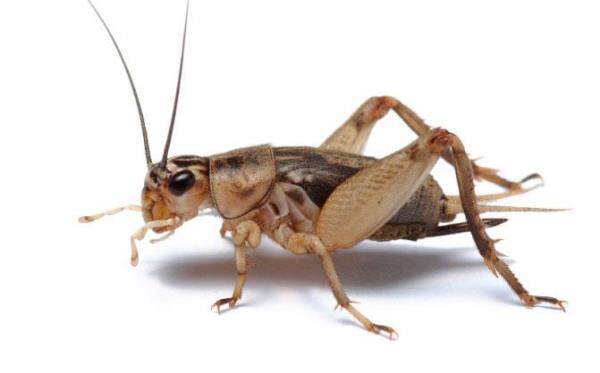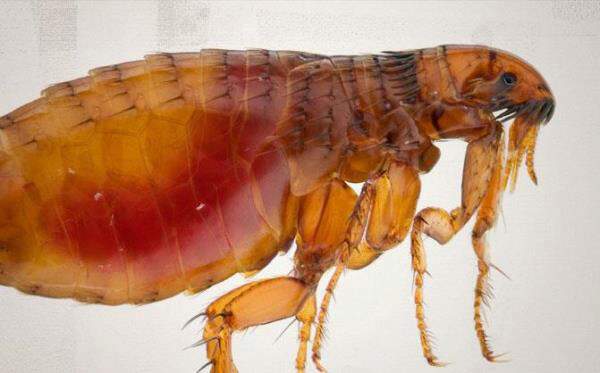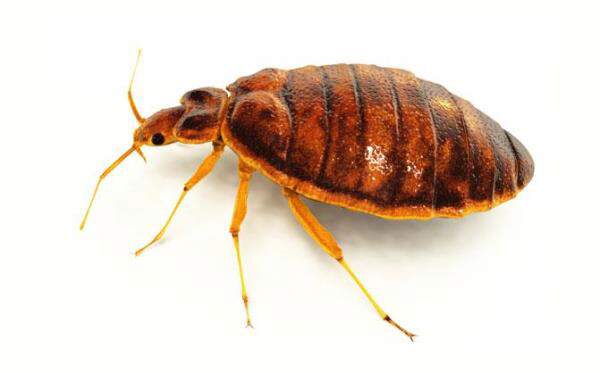Crickets
Hey, what's that noise? It sounds like a high-pitched chirping—sort of like a quiet smoke detector. There must be a cricket in the house!
Meet the Cricket
Crickets are insects with powerful hind legs, very long antennae, and a body shape similar to grasshoppers. We call the pleasant sound they make "chirping," but this isn't exactly accurate. "Chirping" implies a vocal performance (like a bird), while male crickets actually produce their sound by rubbing two sets of wings across each other, which produces a high-frequency vibration that we perceive as a single tone. The chirping is used to attract females1 and to mark territory.
Many adult crickets lay eggs before winter, and these eggs become the next generation of crickets the following year. House crickets (light brown), field crickets (dark brown or black), and camel crickets (light brown and chirp-less) are all common in the U.S.
Why Crickets Are a Problem
Good news! Compared to other insects, crickets are a pretty low threat. They typically aren't out to sting, bite, or otherwise bother anyone (or any pet!) in your home, and they aren't very destructive, either. Still, there are a few concerns and problems that can arise from having crickets around, not the least of which is their chirping. In some cases, the noise can become quite annoying.
How Crickets Affect Your Pet
Crickets shouldn't cause your pet many problems. Some dogs or cats might find crickets interesting and may try to eat one. It's possible this could lead to a few different health issues, although the cricket itself isn't inherently poisonous.
How Crickets Affect Your Home
- Their noise. Probably the most obvious way that crickets affect your home is their "chirping." Depending on how often the chirps occur, this can be very annoying, especially if people try to sleep through cricket noise at night.
- Their eggs. House crickets can potentially lay eggs inside your home (other species typically don't do this).2
- They can be destructive. One or two crickets in your home probably won't do much damage, but a larger infestation can chew on and damage clothing, silk, wool, and even paper.3 They particularly like items with remnants of food on them.
- Their appetites. Crickets have to eat, and inside your home, that might mean helping themselves to the garbage, which can be unsanitary.
How Crickets Affect Your Yard
Crickets eat plant material and leaves in your yard, and they can damage flowers and fresh plant growth. Mole crickets dig tunnels in yards and can cause significant lawn damage.4
How to Get Rid of Crickets
- Think prevention. Think about what attracts crickets in the house and look for ways to eliminate those attractions.
- Keep it dry. Crickets are attracted to moist locations, so keep your home and basement dry to discourage them from hanging out.
- Eliminate food sources. Remove food debris from your home to help keep crickets away.
- Lights out. Crickets may be attracted to artificial lighting, so it may help if you reduce the amount of lighting you use.
- Use a yard spray. A yard product like ADAMS Plus Yard Spray can eliminate outdoor crickets, stop them before they enter your house, and keep the lawn pest-free. For spraying around flowers, fruit trees, and garden areas, try ADAMS Yard and Garden Spray.
- Try a fogger. Sometimes you just can't figure out where the cricket noise in your house is coming from. A fogger like 'ADAMS Plus Flea & Tick Indoor Fogger might be able to reach the cricket even if you can't.
- Guard the house. Protect specific areas of your home and carpeting from crickets with a spray like ADAMS Flea and Tick Carpet & Home Spray.
- Use traps. Wondering how to catch crickets in walls? If you can hear them behind the wall but can't reach them, you might try placing a few insect glue traps near the area. When the crickets come out of the wall at night to look for food, you might catch them.5
Crickets might be fine and dandy in the park, but if you prefer they keep out of your yard and home, you can take steps to stop crickets and their "singing."
1. Sanders, Darryl, and Richard Houseman. University of Missouri Extension. "House-Invading Crickets," December 2015. https://extension.missouri.edu/publications/g7366
2. Bradley, Lucy, and Roberta Gibson. University of Arizona Cooperative Extension. "Cricket Management," April 1998. https://extension.arizona.edu/sites/extension.arizona.edu/files/pubs/az1004.pdf
3. Hahn, Jeffrey, and Mark Ascerno. University of Minnesota Extension. "Crickets," 2018. https://extension.umn.edu/nuisance-insects/crickets
4. Held, David, and Patricia Cobb. Alabama Cooperative Extension System. "Biology and Control of Mole Crickets," 30 May 2019. https://www.aces.edu/blog/topics/lawn-garden/biology-and-control-of-mole-crickets/
5. Ogg, Barb, and Soni Cochran. Nebraska Extension in Lancaster County. "Crickets," September 2015.



